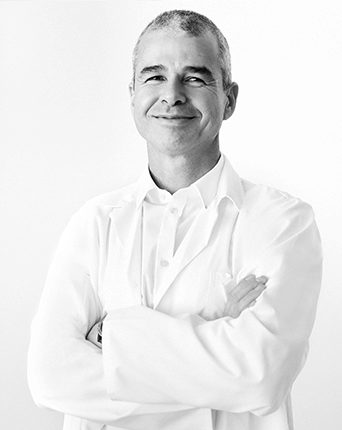
New Research on Hyperbaric Oxygen Therapy for PTSD: Science-Backed Relief


When a traumatic event occurs, the impact can remain long after the trauma resolves. Whether it’s physical trauma from a car accident or the psychological trauma of war, people can experience effects decades later — a medical condition known as post-traumatic stress disorder (PTSD).
As medical scientists have come to better understand PTSD, they have continued to explore more effective and holistic treatment options. Now, a new study on a specific hyperbaric oxygen therapy (HBOT) protocol and PTSD is providing hope for individuals living with treatment-resistant PTSD symptoms.
Becoming educated on the latest advancements in PTSD treatments is the first step to opening the pathway to a better future. More importantly, it’s a milestone to being fully present with your loved ones.
Whatever PTSD roadblocks you face, please know our team of medical professionals is here to share the latest updates on possible treatment options.
A Brief History of PTSD
Distressing events and experiences have always existed, yet:
- PTSD has been recognized as an “operational diagnosis” only since 1980 when it was first included in the Diagnostic and Statistical Manual of the American Psychiatric Association (DSM-111).
- PTSD was only introduced to the World Health Organization’s International Classification of Diseases system in 1992.
Despite its late acceptance, scientists have progressed rapidly in diagnosing and treating PTSD over the last 40+ years. During this time, researchers have come to widely accept that PTSD is characterized by long-term structural and functional changes to the brain.
The severity of brain changes correlates with the severity of symptoms and resistance to treatment. It is the biological damage to the brain that this most recent study set out to explore.
What Did the Research Reveal?
Researchers theorized that a specific hyperbaric oxygen therapy (HBOT) protocol would encourage positive changes to the brain’s activity and structure, thus easing previously unresolved PTSD symptoms.
The study, conducted at the Sagol Center for Hyperbaric Medicine and Research at Shamir Medical Center and Tel Aviv University, included participants who were military veterans with PTSD who had been unresponsive to current treatment options.
These conventional treatments included:
- Medication
- Talk therapy
- Cognitive processing therapy
- Eye movement desensitization and reprocessing (EMDR)
After just three months, the unique HBOT process:
“Improved symptoms, brain microstructure and functionality in veterans with treatment-resistant PTSD.”
The veterans self-reported overcoming challenges such as avoidance, cognition and mood changes, and depression.
Structurally, researchers witnessed improvements in brain function using high-resolution MRI assessments.
New Research on Treating PTSD with HBOT
The research team published an additional study into the efficacy of the same HBOT protocol for treating PTSD in 2024. The randomized, controlled clinical trial included 56 combat veterans with treatment-resistant PTSD. The results revealed that those who were treated with HBOT saw reduced PTSD symptoms, less depression, and improved brain connectivity within the three main networks of the brain impacted by PTSD. The group that received sham (placebo) treatment did not experience these improvements, and in some cases even worsened. The same HBOT protocol used in the study is offered as part of the evidence-based Aviv Medical Program.
Two of the primary researchers behind this study, including Dr. Shai Efrati, were interviewed by CBS Sunday Morning about their innovative research and the promise that hyperbaric oxygen therapy holds for military veterans and others suffering from post-traumatic stress disorder.
Watch: A Promising New Treatment for PTSD
The Connection Between PTSD, Fibromyalgia, and HBOT
In a previous study, members of the same research team studied women diagnosed with fibromyalgia syndrome who also had a history of childhood sexual abuse (CSA). Fibromyalgia often arises after physical trauma or significant psychological stress.
In addition to physical symptoms such as muscle and joint pain, poor sleep, and fatigue, fibromyalgia also has a cognitive component.
Dr. Shai Efrati, the Chair of Aviv’s Medical Advisory Board and Director of the Sagol Center for Hyperbaric Medicine and Research, describes this cognitive component as a “fracture of the brain.”
Dr. Efrati and his team were able to identify damaged brain tissue in these women. This biological evidence indicates that PTSD is present.
Similar to the study involving military veterans, participants in the fibromyalgia clinical trial who received the specialized HBOT protocol achieved significant improvement in their symptoms. Results have maintained consistency in the two years following the study’s completion.
According to Dr. Efrati: “We saw the wound in the brain, and we treated it. It’s amazing what happened to them, just amazing. The way they see the world is totally different. The way they communicate with their children, their families. They’re successful at work. They don’t take medication anymore. It’s a game-changer.”

Hyperbaric Oxygen Treatment for PTSD Offers Hope
Aviv Medical Program can include this specialized HBOT protocol as a component of the personalized Aviv Medical Program. This holistic program has been successful in treating challenges like stroke, traumatic brain injury, fibromyalgia, and age-related cognitive decline. The same HBOT mechanisms — increasing brain activity and metabolism — were applied to the non-healing wounds of PTSD’s psychological trauma in both the fibromyalgia and veteran clinical trials.
“The association found between the clinical improvement and brain functional changes have, for the first time, given us very important insights into the biology of PTSD in the brain,” notes Dr. Efrati.
Why Is This Research So Important?
While the latest research involved military personnel, anyone can develop PTSD. In fact, on average, “one in 11 people will be diagnosed with PTSD in their lifetime.”
According to research gathered by Statista, PTSD occurs in:
- 49% of rape survivors
- 83% of veterans/active-duty members serving post-9/11
- 30% of American adults aged 18–25 with any history of mental illness in the past year
- 14% of individuals who experience the unexpected death of a friend or family member
Given PTSD’s pervasiveness, the innovative research on the use of HBOT for PTSD represents a considerable leap in treatment. Dr. Keren Doenyas-Barak, head of the PTSD program at the Sagol Center, expressed this sentiment:
“Our study shows for the first time in humans that HBOT-induced neuroplasticity may target those brain pathologies, and thus be used as a new therapeutic strategy for people who suffer from this chronic debilitating disorder.”
Building a More Grounded and Optimistic Future
The connection between physical and psychological damage in the brain will be revolutionary in addressing PTSD’s “hidden” nature. No person would be expected to perform at their j full potential with a broken leg or fractured spine. In PTSD, the brain is similarly wounded, but the outside world can’t see it.
This invisibility makes it especially difficult for employers, friends, or family members to understand why someone with PTSD struggles so much with completing daily tasks or maintaining relationships. In addition, individuals with PTSD may often feel isolated and misunderstood. The experiences that lead to PTSD are entirely unique to them.
HBOT offers hope that many more individuals can build a more grounded and optimistic future. Learn more about the research-backed hyperbaric chamber treatment for PTSD that may be included as part of the personalized Aviv Medical Program.
Kaui’s Story – A Former Navy SEAL Overcomes Invisible Wounds With the Aviv Medical Program
Crystal’s Story – Air Force Veteran Finds Relief From Post-Traumatic Stress with HBOT
The Bottom Line
Aviv Clinics’ board-certified clinical team is motivated to continue this important research. Here at the nation’s most active civilian HBOT facility, we not only treat PTSD, but many other conditions that involve physical or psychological trauma to the brain. The protocols already in the Aviv Medical Program are providing real, measurable results for treating neurological symptoms.
Contact Aviv Clinics to schedule a free consultation with a client ambassador and discuss how the Aviv Medical Program can help you or your loved one.
Last Update: Nov. 25, 2025
Aviv Medical Program provides you with a unique opportunity to invest in your health while you age



